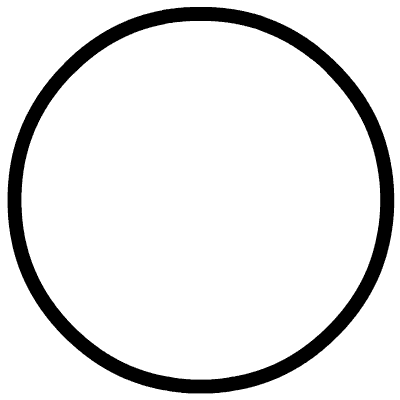
英文 | https://javascript.plainenglish.io/understand-es6-in-20-minutes-8ab8f958e379
了解 ES6
根据维基百科解释“ECMAScript 规范是由 Netscape 的 Brendan Eich 开发的脚本语言的标准化规范;最初命名为 Mocha,然后是 LiveScript,最后是 JavaScript。”
ECMAScript 2015 (ES2015) 是第 6 版,最初称为 ECMAScript 6 (ES6),它添加了许多新功能,这些新功能后来成为 Web 开发人员工具包的重要组成部分。本文旨在帮助您以轻松易懂的方式了解这些新的 ES6 特性。
ES6 块作用域 let
首先,什么是范围?范围是指来自我们程序不同部分的变量的可访问性。在使用 let 声明变量之前,JavaScript 变量具有全局范围和函数范围(使用 var 声明时)。当使用 let 声明变量时,ES6 为 JavaScript 带来了块级范围。
{
var a = "?";
let b = "⛳";
}
console.log(a);
console.log(b);?
Uncaught ReferenceError: b is not defined可以看出,我们使用var关键字在block中定义了变量“a”,可以全局访问。所以var声明的变量是全局的,但是,我们希望变量在block中生效,退出block时不可访问。然后,可以使用 ES6 新的块级作用域关键字 let 来声明变量,就像这里的变量 b 一样,会报错说 b 没有定义。
ES6 解构数组
首先,我们定义一个返回数组的函数。然后我们调用该函数并将结果存储在变量 temp 中。要访问每个值,我们必须打印 temp[0]、temp[1]、temp[2]。使用解构,我们可以直接调用早餐函数并在此处分离出变量 a、b 和 c 中的每个单独的值(第一个变量将被分配第一个值,第二个变量将被分配第二个值,依此类推)。最后,我们打印三个变量,看看有没有问题。
function breakfast() {
return ['?', '?', '?'];
}
var temp = breakfast();
console.log(temp[0], temp[1], temp[2]);let [a, b, c] = breakfast();
console.log(a, b, c);? ? ?
? ? ?ES6 解构对象
breakfast函数返回一个对象。使用解构,我们可以直接检索对象的值并将它们存储在变量 a、b 和 c 中。键值对中的key代表映射的实际对象的键名,value为自定义变量。解构完成后会自动完成赋值,然后调用早餐函数返回对象。然后,打印变量a、b、c,可以看到没有问题。
function breakfast() {
return { a: '?', b: '?', c: '?' }
}
let { a: a, b: b, c: c } = breakfast();
console.log(a, b, c);? ? ?ES6 模板字符串
在使用模板字符串之前,我们使用 + 运算符连接字符串。
取而代之的是,我们现在可以使用 ES6 提供的模板字符串,首先使用 `` 来包裹字符串,当要使用变量时,使用 ${variable}。
let a = '?',
b = '?️';let c = 'eat watermelon' + a + 'watch TV' + b;
console.log(c);let d = `eat watermelon ${a} watch TV ${b}`;
console.log(d);eat watermelon?watch TV?️
eat watermelon ? watch TV ?️ES6 检查字符串是否包含其他字符串
使用这些函数,可以轻松检查字符串是否以某物开头,是否以某物结尾,以及是否包含任何字符串等。
let str = 'hello, my name is Tom ❤️';
console.log(str.startsWith('hello'));
console.log(str.endsWith('❤️'));
console.log(str.endsWith('hello'));
console.log(str.includes(" "));true
true
false
trueES6 默认参数
在 ES6 中,可以使用默认参数。调用函数时,当参数没有赋值时,会使用设置的默认参数执行。分配参数时,它将使用新分配的值执行,覆盖默认值。使用以下内容:
function say(str) {
console.log(str);
}
function say1(str = 'hey-hey') {
console.log(str);
}
say();
say1();
say1('❤️');undefined
hey-hey
❤️ES6 扩展运算符
使用 ... 扩展元素以便于操作。按如下方式使用:
let arr = ['❤️', '?', '?'];
console.log(arr);
console.log(...arr);
let brr = ['prince', ...arr];
console.log(brr);
console.log(...brr);[ '❤️', '?', '?' ]
❤️ ? ?
[ 'prince', '❤️', '?', '?' ]
prince ❤️ ? ?ES6 展开运算符
用于函数参数,接收参数数组,使用以下内容:
function f1(a, b, ...c) {
console.log(a, b, c);
console.log(a, b, ...c);
}
f1('?','?','☃️','?');? ? [ '☃️', '?' ]
? ? ☃️ ?ES6 函数名
使用 .name 获取函数的名称,如下:
function f1() { }
console.log(f1.name);
let f2 = function () { };
console.log(f2.name);
let f3 = function f4() { };
console.log(f3.name);f1
f2
f4ES6 箭头函数
使用箭头函数可以让代码更简洁,但也要注意箭头函数的局限性,而且箭头函数本身并没有this,this指向父级。
let f1 = a => a;let f2 = (a, b) => {
return a + b;
}console.log(f1(10));
console.log(f2(10, 10));10
20ES6 对象表达式
使用 ES6 对象表达式,如果对象属性与值相同,则可以省略值,不写函数也可以写函数。用法如下:
let a = '?';
let b = '☃️';const obj = {
a: a,
b: b,
say: function () {}
}const es6obj = {
a,
b,
say() {}
}console.log(obj);
console.log(es6obj);{ a: '?', b: '☃️', say: [Function: say] }
{ a: '?', b: '☃️', say: [Function: say] }ES6 常量
使用 const 关键字定义度量。const 限制为度量分配值的操作,而不是度量中的值。使用以下内容:
const app = ['☃️', '?'];
console.log(...app);
app.push('?');
console.log(...app);
app = 10;可以看出,当再次给测量赋值时,报错。
☃️ ?
☃️ ? ?
app = 10;
^
TypeError: Assignment to constant variable.ES6 对象属性名
使用点定义对象属性时,如果属性名称中包含空格字符,则为非法,语法不能通过。使用【属性名】就可以完美解决,不仅可以直接写属性名,还可以使用变量来指定,具体使用如下:
let obj = {};
let a = 'little name';
obj.name = 'prince';
// It is illegal to use dots to define properties with spaces between them
// obj.little name = 'little Prince';
obj[a] = 'little Prince';
console.log(obj);{ name: 'prince', 'little name': 'little Prince' }ES6 检查两个值是否相等
使用 === 或 == 比较某些特殊值的结果可能无法满足您的需求。可以用Object.is(第一个值,第二个值)来判断,说不定你会开心 Laughed
console.log(NaN == NaN);
console.log(+0 == -0);
console.log(Object.is(NaN, NaN));
console.log(Object.is(+0, -0));false
true
true
falseES6 复制对象
使用 Object.assign() 将一个对象复制到另一个对象,如下所示:
let obj = {};
Object.assign(
// source
obj,
// Copy target object
{ a: '☃️' }
);
console.log(obj);{ a: '☃️' }ES6 设置对象的原型
使用 es6,可以如下设置对象的原型:
let obj1 = {
get() {
return 1;
}
}
let obj2 = {
a: 10,
get() {
return 2;
}
}
let test = Object.create(obj1);
console.log(test.get());
console.log(Object.getPrototypeOf(test) === obj1);
Object.setPrototypeOf(test, obj2);
console.log(test.get());
console.log(Object.getPrototypeOf(test) === obj2);1
true
2
trueES6 原型
使用方法如下。
let obj1 = {
get() {
return 1;
}
}
let obj2 = {
a: 10,
get() {
return 2;
}
}
let test = {
__proto__: obj1
}
console.log(test.get());
console.log(Object.getPrototypeOf(test) === obj1);
test.__proto__ = obj2;
console.log(test.get());
console.log(Object.getPrototypeOf(test) === obj2);1
true
2
trueES6 超级
let obj1 = {
get() {
return 1;
}
}
let test = {
__proto__: obj1,
get() {
return super.get() + ' ☃️';
}
}
console.log(test.get());1 ☃️ES6 生成迭代器
学习之前,先写一个迭代器
function die(arr) {
let i = 0;return {
next() {
let done = (i >= arr.length);
let value = !done ? arr[i++] : undefined;return {
value: value,
done: done
}
}
}
}
let arr = ['☃️', '?', '?'];let dieArr = die(arr);
console.log(dieArr.next());
console.log(dieArr.next());
console.log(dieArr.next());
console.log(dieArr.next());{ value: '☃️', done: false }
{ value: '?', done: false }
{ value: '?', done: false }
{ value: undefined, done: true }OK,看看简化的生成器
function* die(arr) {
for (let i = 0; i < arr.length; i++) {
yield arr[i];
}
}
let test = die(['?','☃️']);
console.log(test.next());
console.log(test.next());
console.log(test.next());{ value: '?', done: false }
{ value: '☃️', done: false }
{ value: undefined, done: true }ES6 类
使用 es6 可以快速轻松地构建类
class stu {
constructor(name) {
this.name = name;
}
say() {
return this.name + 'say hello';
}
}
let xiaoming = new stu("Tom");
console.log(xiaoming.say());Tom say helloES6 设置
定义获取或修改类属性的 get/set 方法
class stu {
constructor(name) {
this.name = name;
}
get() {
return this.name;
}
set(newStr) {
this.name = newStr;
}
}
let xiaoming = new stu("Tom");
console.log(xiaoming.get());
xiaoming.set("John")
console.log(xiaoming.get());Tom
JohnES6 静态
使用 static 关键字修改的方法可以直接使用,无需实例化对象
class stu {
static say(str) {
console.log(str);
}
}
stu.say("This is a static method");This is a static methodES6 扩展
使用继承,可以减少代码冗余,例如:
class Person {
constructor(name, bir) {
this.name = name;
this.bir = bir;
}
showInfo() {
return 'name:' + this.name + 'Birthday:' + this.bir;
}
}
class A extends Person {
constructor(name, bir) {
super(name, bir);
}
}
let zhouql = new A("Tom", "2002-08-24");
// Tom itself does not have a showInfo method, it is inherited from Person
console.log(zhouql.showInfo());Name: Tom Birthday: 2002-08-24ES6 套装
Set 集合,与数组不同,Set 集合中不允许有重复元素
// Create Set collection
let food = new Set('??');
// Repeatedly add, only one can enter
food.add('?');
food.add('?');console.log(food);
// current collection size
console.log(food.size);
// Check if an element exists in a collection
console.log(food.has('?'));
// remove an element from a collection
food.delete('?');
console.log(food);
// loop through the collection
food.forEach(f => {
console.log(f);
});
// empty collection
food.clear();
console.log(food);Set(3) { '?', '?', '?' }
3
true
Set(2) { '?', '?' }
?
?
Set(0) {}ES6 Map
Map组合存储键值对
let food = new Map();
let a = {}, b = function () { }, c = "name";food.set(a, '?');
food.set(b, '?');
food.set(b, '?');
food.set(c, 'rice');console.log(food);
console.log(food.size);
console.log(food.get(a));
food.delete(c);
console.log(food);
console.log(food.has(a));food.forEach((v, k) => {
console.log(`${k} + ${v}`);
});
food.clear();
console.log(food);Map(3) { {} => '?', [Function: b] => '?', 'name' => 'rice' }
3
?
Map(2) { {} => '?', [Function: b] => '?' }
true
[object Object] + ?
function () { } + ?
Map(0) {}ES6 模块化
使用模块化开发,ES6可以很方便的导入导出一些内容,以及默认导出等细节:
let a = '?';
let f1 = function (str = 'you write parameters') {
console.log(str);
}
export { a, f1 };import {a, f1} from './27 module test.js';
console.log(a);
f1();
f1('understood');总结
以上就是我今天跟你分享的关于ES6的一些内容,希望你能从中学到新的内容,如果你觉得有用的话,请记得点赞我,关注我,并将它分享给你身边做开发的朋友,也许能够帮助到他。
最后,感谢你认真阅读完这篇文章,如果觉得文章非常不错,欢迎下次再来。
学习更多技能
请点击下方公众号

![]()
